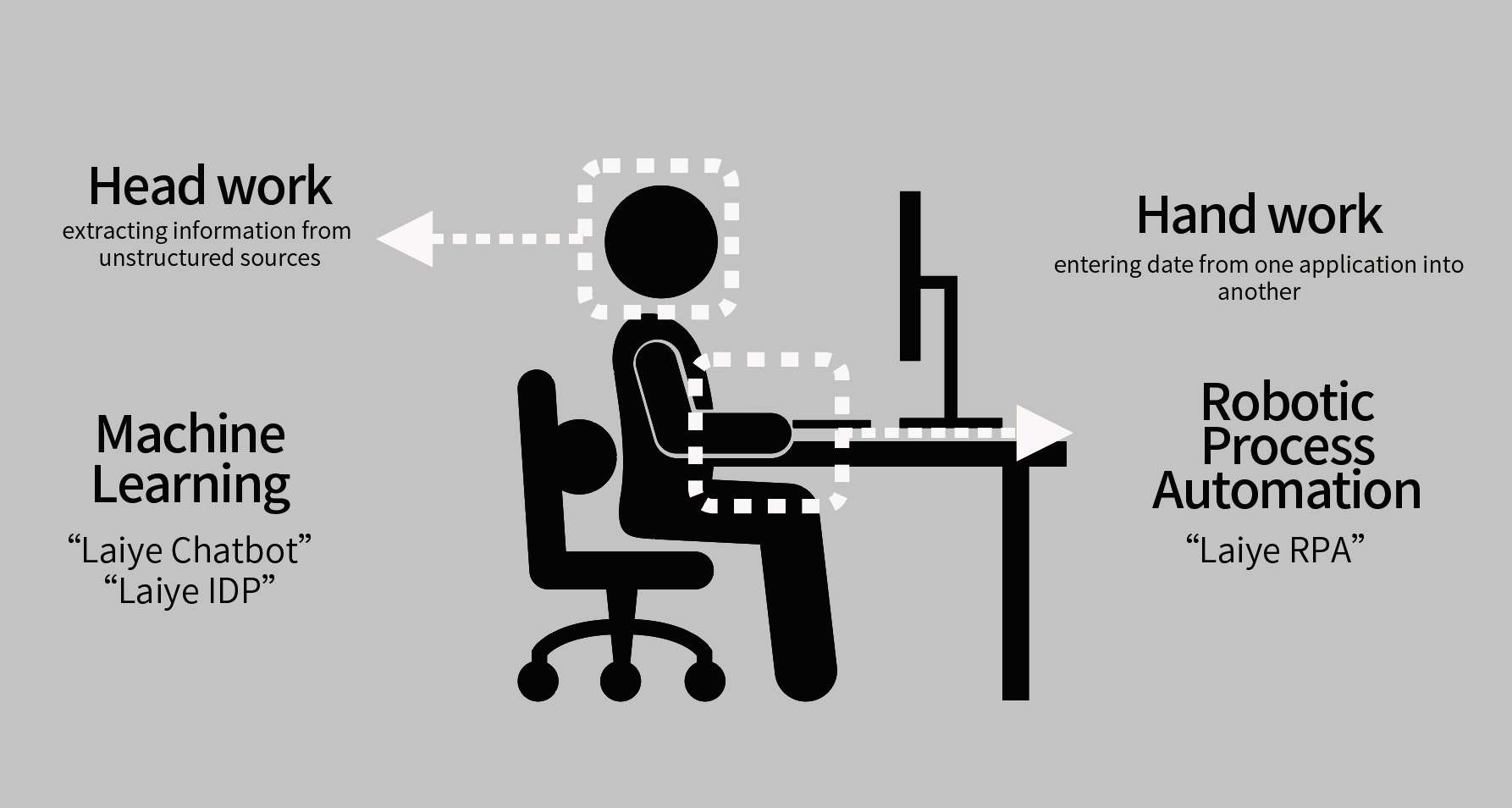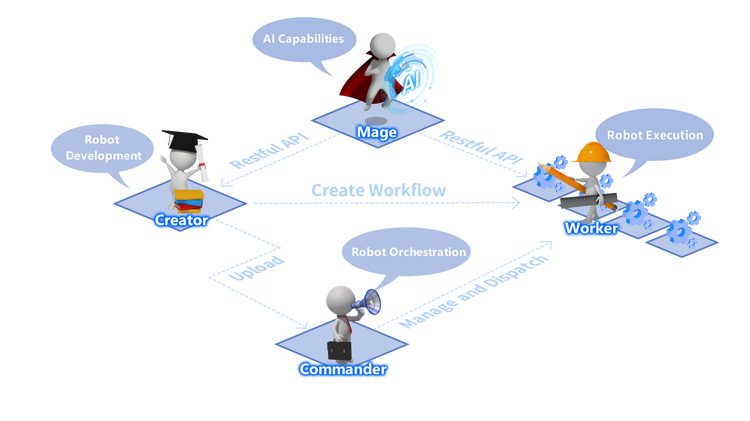What’s Laiye IDP?
Here is the on-premise version for IDP platform - GPU IDP V3.25 Enterprise .
General introduction
For RPA robots, if AI is its brain, cognitive abilities are its eyes, mouth, and ears, and RPA is its hands. Combining with AI capabilities, RPA abilities are expanded from that can only help rule-based, mechanical, and repetitive tasks being automated to richer business scenarios, RPA can effectively connect the physical world with the digital world to satisfy more flexible and diversified business scenario automation needs. Companies that use RPA platforms with AI capabilities can quickly, economically, and flexibly apply AI technology to their businesses.

In the Laiye product matrix, Creator is used to produce robots, Worker is used to execute robots, and Commander is used to manage robots. As an RPA-oriented AI platform, Laiye IDP provides a lot of AI capabilities for image understanding, document understanding, and speech understanding, and empowers robot production and execution.

Advantages of Laiye IDP
- Provide a wealth of pre-trained AI models. The user does not need AI experience to use it.
- Provide powerful customized AI capabilities. Users can label, train, evaluate, and optimize AI models on their own data through code-free methods, so that the models can understand documents in professional fields.
- Integrate with Creator seamlessly through pre-sets. Enable the robot with AI capabilities by dragging and dropping to help companies to implement RPA+AI quickly.
- Support two deployment methods: public cloud and private deployment. Private deployment supports localized adaptation to ensure data privacy.
- Suitable for various industries such as finance, human resources, legal affairs, IT operation and maintenance, power grid, operators, marketing, customer service, etc., forming an end-to-end intelligent automation solution.
Introduction of Laiye IDP AI capabilities
The AI capabilities on the Laiye IDP platform can be understood from different perspectives.
- From the perspective of customization, AI capabilities can be divided into general AI capabilities and customized AI capabilities.
- General AI capability: It provides a pre-trained out-of-the-box AI model that can deal with the recognition and extraction tasks of scenarios such as ID cards, bank cards, invoices, and train ticket recognition.
- Customized AI capabilities: Users needs to upload their own data set. Afer annotation, training, evaluation, and optimization of the AI model, the model can understand the documents in the professional field.
- From the perspective of the types of data processed, AI capabilities can be divided into three types: image understanding, document understanding, and speech processing.
- Laiye IDP also provides comprehensive AI capabilities that provide end-to-end solutions to documents, leveraging existing OCR and NLP atomic capabilities and deep learning models to assist robots in understanding documents and extracting key information from documents.
The following table lists all AI capabilities on the Laiye IDP platform and describes the classification and purpose of each capability.
| Customization | Data type | Capability | Purpose |
| Pre-trained AI capabilities | Image Understand | Text Recognition | Recognize all text in the image. |
| Form Recognition | Recognize the out-of-table text and the in-table text in the image and return the content of the table according to the order of the cells. | ||
| Stamp Recognition | Identify the position, color and content of the seal. | ||
| Customized AI capabilities | Text Understand | Text Extraction | Upload a group of text files with relatively fixed text content, and extract the field values required by services by means of configuration rules or training model based on context semantic information. |
| Text Understand | Text Classification | Create categories and upload similar terms for each category to generate AI models automatically. Entering new text returns the matched classification and confidence. | |
| Document Understand | Classification | Document Classification | A Document Classification model can be trained by annotating a small amount of data, which can make category-based recommendations on doc.It is suitable for classifying the entire doc, and also supports category-based recommendations for each page of the doc. |
| Extraction | Intelligent Template Recognition | Extracting key information from documents is suitable for dealing with structured or semi-structured single-page documents, such as shipping slips, non-standardized bills, etc. | |
| Comparison | Document Comparison | Compare the electronic version of the contract with the scanned copy of the actual signed paper contract, quickly locate the difference, improve the work efficiency of legal staff. |